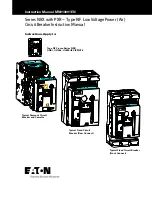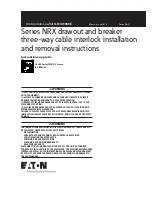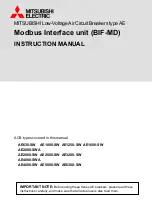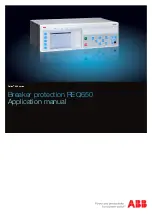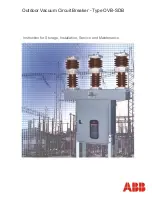
CHAPTER 5: SETTINGS
GROUPED ELEMENTS
B30 BUS DIFFERENTIAL SYSTEM – INSTRUCTION MANUAL
5-191
5
Figure 5-98: Biased differential operating characteristic
The protected zone input current with the highest magnitude is used as the restraining signal. Stability during heavy
external faults is achieved by dynamic CT saturation detection and current flow direction supervision without affecting
sensitivity and speed of operation for internal faults.
The differential operating characteristic is divided into two regions. In the region of low differential currents and lower
slope, the element operates on a 2-out-of-2 basis, applying both the differential and current directional tests. In the region
of high differential currents, the element operates on a dynamic 1-out-of-2 / 2-out-of-2 basis. If the differential current is in
this region and CT saturation is detected, both the differential and current directional tests are applied. If CT saturation is
ruled out by the saturation detector, the differential protection principle alone is capable of causing the element to
operate.
The saturation detector is an integral part of the bus differential element. It has no settings but uses some of the
differential characteristic parameters. The flags indicating CT saturation are available on a per phase basis as FlexLogic
operands.
The directional principle is an integral part of the biased bus differential element and has no associated settings. The
directional element dynamically identifies what appears to be the faulted circuit and compares its current angle with that
of the sum of the remaining currents of the protected zone. The element declares a bus fault if the angle is less than 90°.
Directional indicating flags signal operation on a per-phase basis and are available as FlexLogic operands.
The unbiased bus differential function checks the magnitude of the differential current against an adjustable threshold.
Neither the bias nor the directional principles apply. The operation of the unbiased differential function is associated with
separate output operands.
Operation of this element is completely dependent on the dynamic bus replica which must be first defined under bus zone
1. The bus differential element 1 protects the differential zone defined as bus zone 1.
BUS ZONE 1 DIF PICKUP
— This setting defines the minimum differential current required for operation of the biased bus
differential protection element. This setting is chosen based on the maximum magnitude of the differential current that
might be seen under no-load conditions. This setting prevents relay maloperation in the situation when the bus carries
little power and the restraining signal is too low to provide enough bias in the first slope region of the differential
characteristic.
This setting can also be set above the maximum load level to ensure security during CT trouble conditions. However,
voltage supervision or a check-zone are better alternatives.
BUS ZONE 1 DIF LOW SLOPE
— This setting defines the percentage bias for the restraining currents, from zero to the lower
breakpoint (
LOW BPNT
). This setting determines the sensitivity of the relay for low current internal faults. The value chosen
needs to be high enough to accommodate the spurious differential current resulting from inaccuracy of the CTs operating
Summary of Contents for b30
Page 10: ...x B30 BUS DIFFERENTIAL SYSTEM INSTRUCTION MANUAL TABLE OF CONTENTS ...
Page 486: ...5 278 B30 BUS DIFFERENTIAL SYSTEM INSTRUCTION MANUAL TESTING CHAPTER 5 SETTINGS 5 ...
Page 616: ...iv B30 BUS DIFFERENTIAL SYSTEM INSTRUCTION MANUAL ABBREVIATIONS ...
Page 632: ...xvi B30 BUS DIFFERENTIAL SYSTEM INSTRUCTION MANUAL INDEX ...































